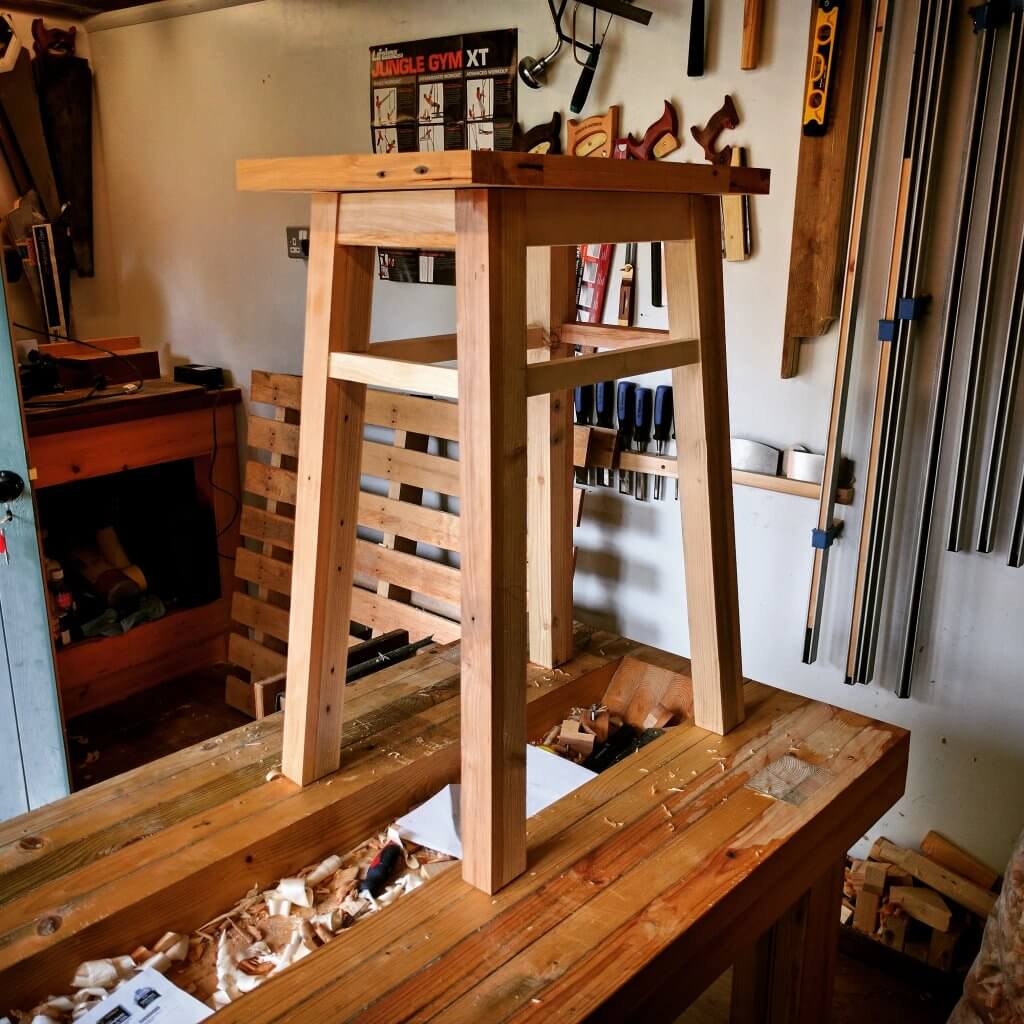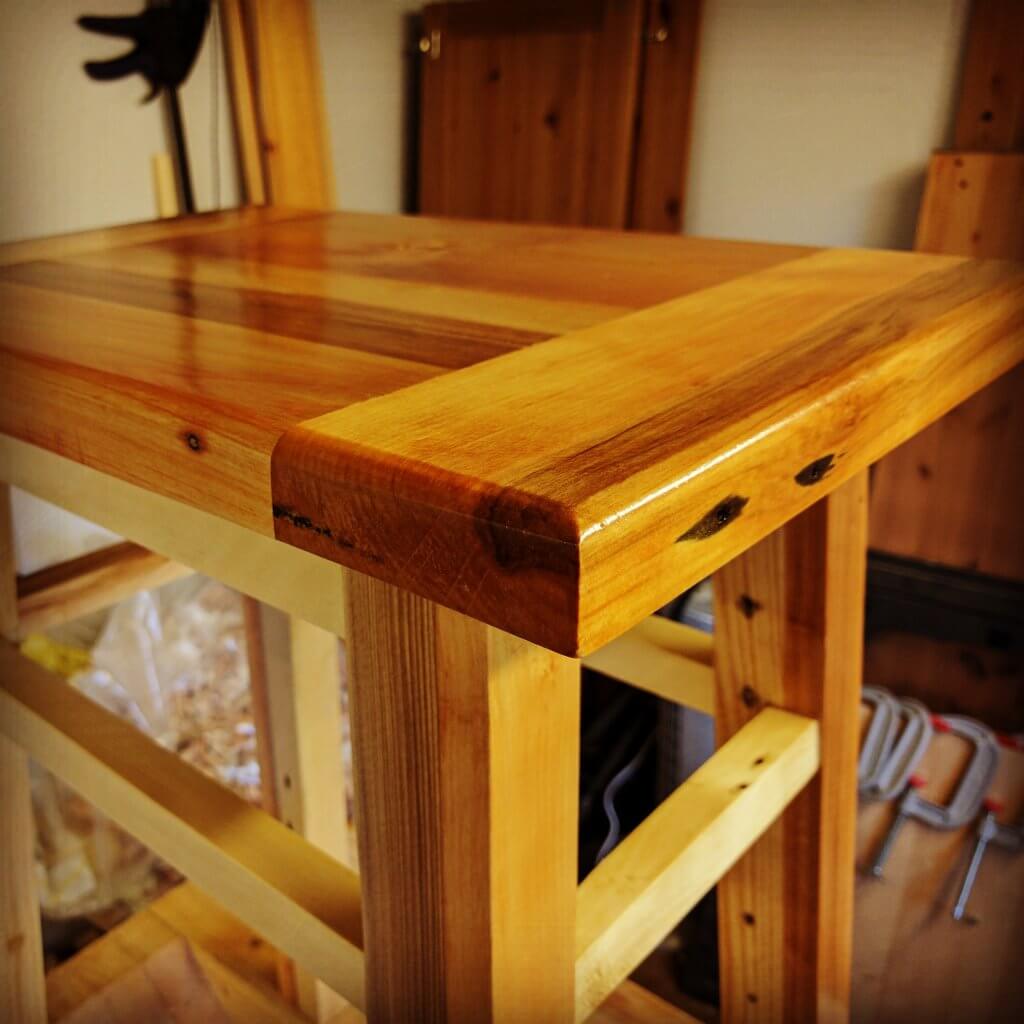I’ve been finding excuses to practice various techniques. I’m building up the techniques I need to make a dining table.
With this project, I wanted to practice a breadboard end top – this would be the seat – and splayed stool legs to try out angled mortise and tenon joinery.
I acquired a fairly pristine pallet that came apart with relative ease, so I had plenty of good lengths of wood. I laminated the legs with a combination of the darker, thinner deckboards and the lighter, thicker pallet stringers (bearers).
The stool top was relatively straightforward. The breadboard end is essentially a big mortise and tenon joint, with a bit of wiggle room to allow for horizontal expansion.
The splayed legs, on the other hand, required several cups of tea and much head-scratching. It took longer than it should to dawn on me that each leg’s top and bottom are parallel (obvious in hindsight, really).
It also took a little while to get the compound angle right and consistent across the legs.
The angled mortise and tenon joints came out surprisingly neatly. Bevel gauge and knife lines for the win.
With a good few months’ usage out of this stool, it’s holding up beautifully, and the top has had a 1/16″ or so expansion, so the breadboard ends are doing their job admirably.

